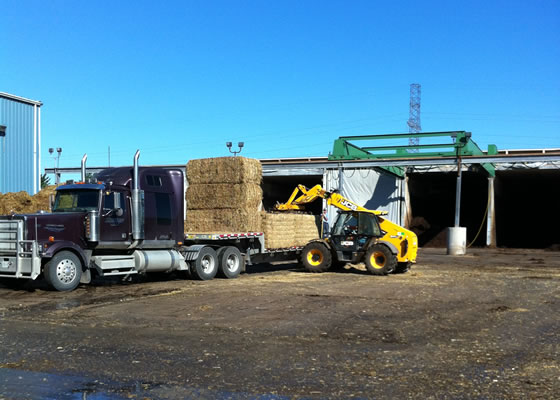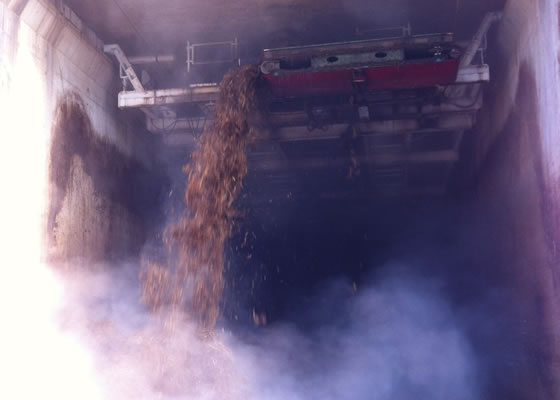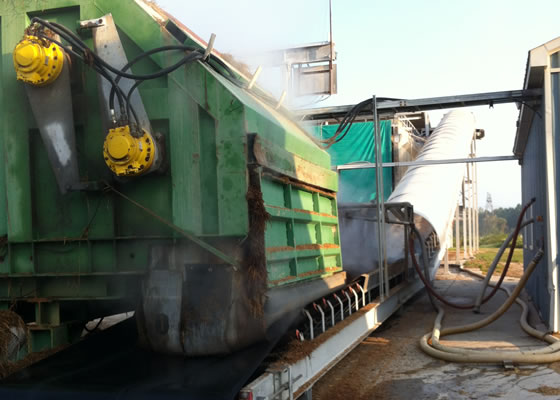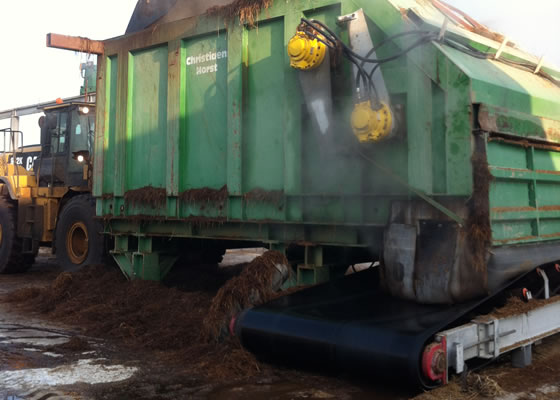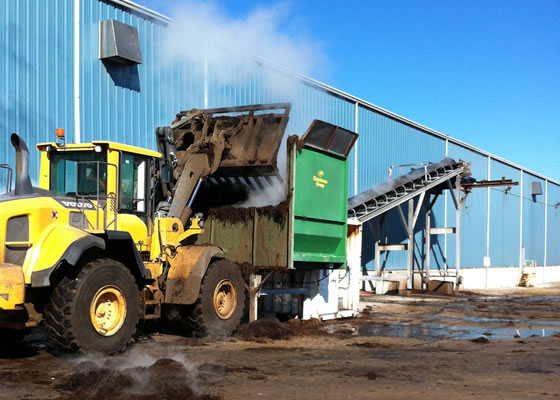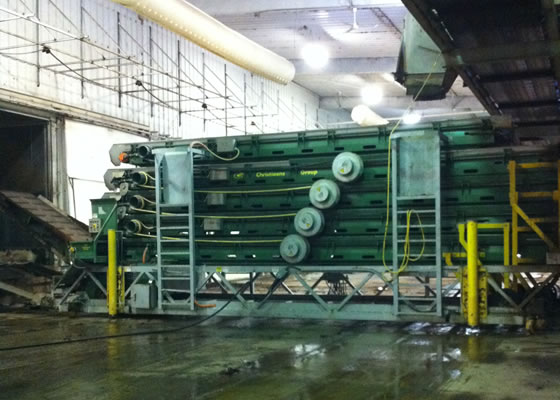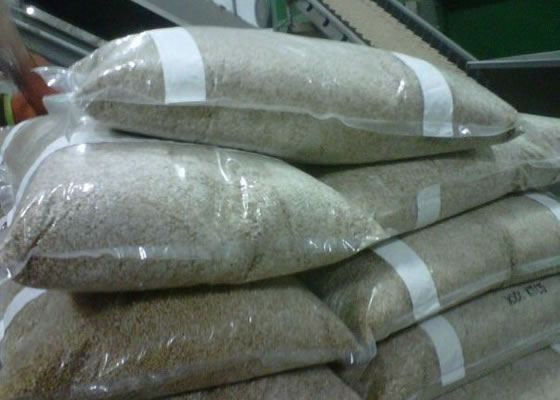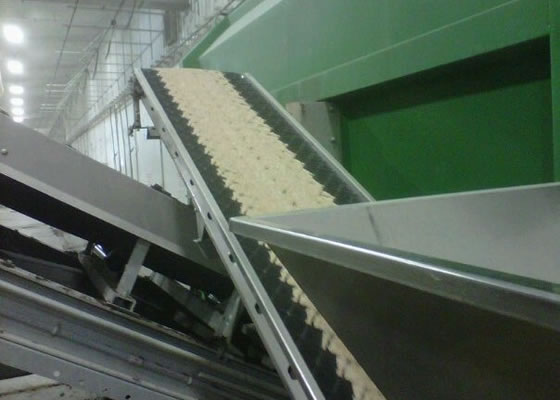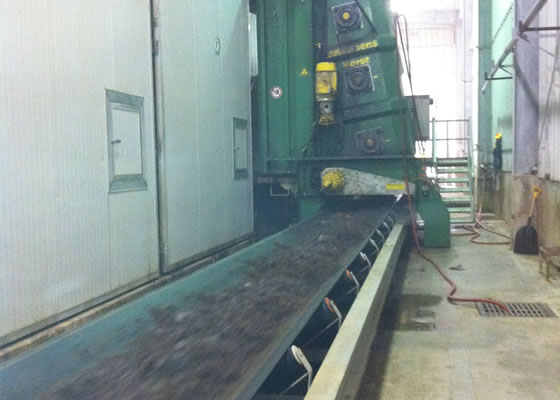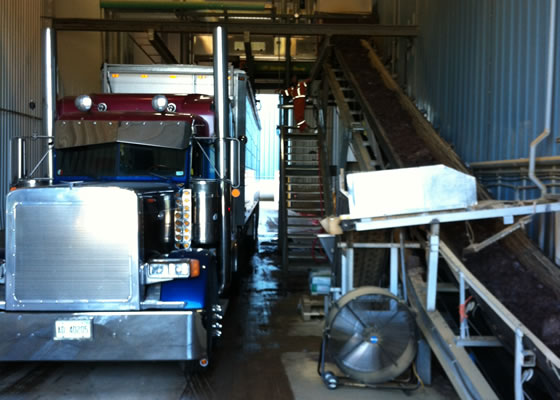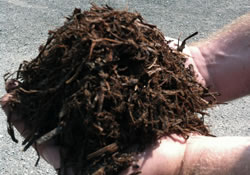What happens at MPCI?
Phase 1
- Trucks enter the property with loads of straw and are weighed.
- Straw bales are unloaded from the trucks and stored in piles.
- MPCI's 9 bunkers are equipped with concrete aerated floors that allow for better environmental controls/aerobic conditions.
- Front end loaders move the straw into the bunkers.
- Bales of straw are pre-wet using recycled water to soften the straw and make it more water absorbent. The bales remain in the bunkers for ±3 days.
- Front end loaders remove the wet bales from the bunkers and move them to a hopper/conveyor system where the bales are broken up and fed into the hopper for mixing.
- Front end loaders move poultry manure from storage bins to the hopper.
- Poultry manure is added to the hopper and mixed with the straw.
- Manure/straw mixture travels up the conveyor belt and across the bunkers, and is deposited into the bunkers where the mixture remains for ±1 day for fermentation.
- Front end loaders move the mixture from the bunkers back to the hopper where gypsum is mixed in with the substrate and then re-deposited into the bunkers via conveyor. Substrate remains in bunkers for ±5 days where the temperature of the substrate rises significantly to more than 80°C (±180°F).
- Next the mixture is moved (to new bunkers) for cooling purposes for ±1 day.
- The cooled Phase I substrate is moved via front end loader to conveyors leading into the main building.
Phase 2
- Once the nutrient rich mixture enters the building, the second phase begins.
- Phase 2 occurs within wholly enclosed, temperature controlled tunnels and continues the conversion of nutrients into a selective food supply for mushrooms.
- The tunnels are loaded with the Phase I substrate. Pasteurization occurs within the tunnels when steam is introduced to kill any insects or other pests that may be present in the compost. The mixture remains in the tunnels for ±5 days.
- Phase 2 composting is a controlled, temperature dependent, ecological process using air and steam to maintain the compost in a temperature range best suited for organisms to grow and reproduce.
- Next, the compost is removed from the tunnels and mushroom spores (mushroom equivalent of seeds) are added. The spawn enriched compost is then re-deposited into the tunnels where the spawn grows and incubates for ±15 days.
- Next, the compost is removed from the tunnels and mushroom spores (mushroom equivalent of seeds) are added. The spawn enriched compost is then re-deposited into the tunnels where the spawn grows and incubates for ±15 days.
Phase 3
- Final mushroom compost is removed from the tunnels via conveyors and deposited into enclosed shipping trailers.
- Shipping trailers leave to deliver compost to mushroom producing facilities in Ontario.
 Mushroom Producers Cooperative Inc
Mushroom Producers Cooperative Inc